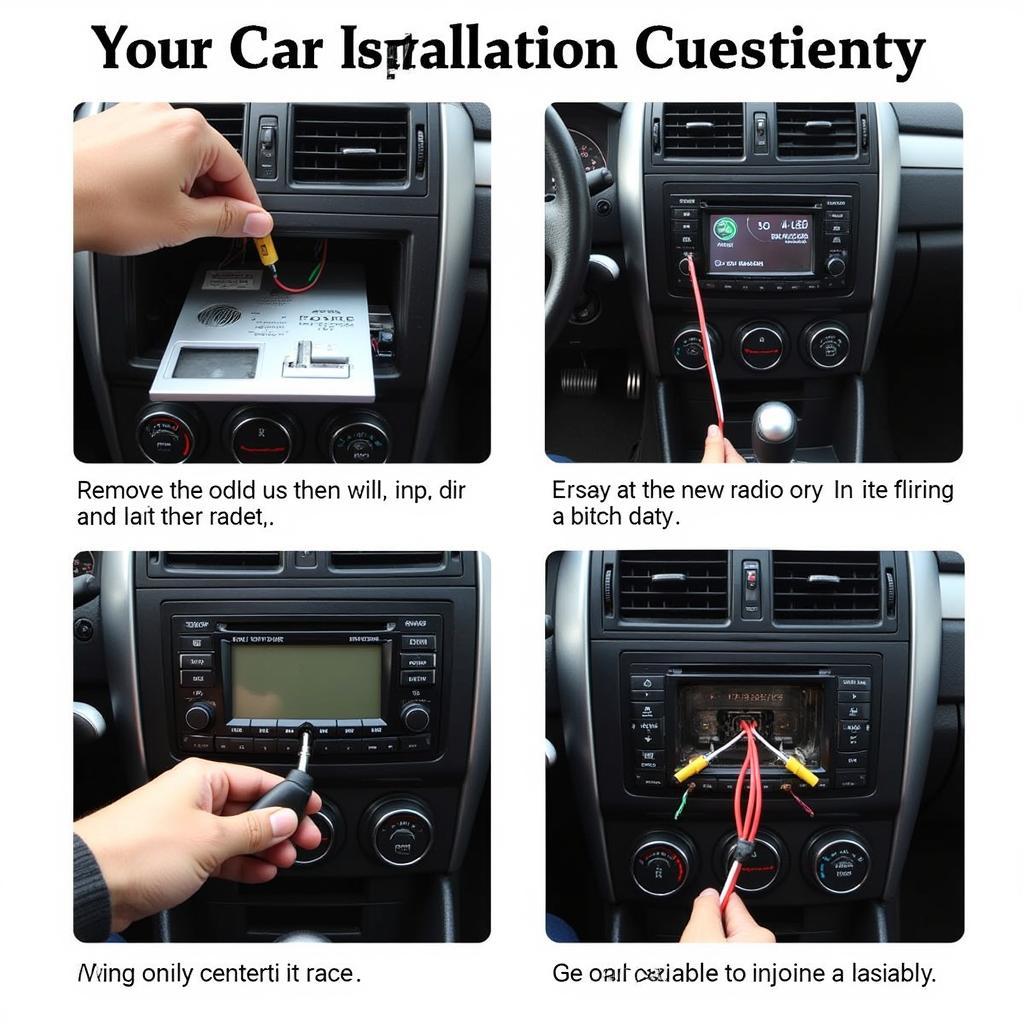A parasitic draw car issue can be frustrating, leaving you with a dead battery and a vehicle that won’t start. It happens when something in your car continues to draw power even after the ignition is off. This article will guide you through the process of identifying and resolving this common car problem, from simple checks to more advanced diagnostic techniques.
Understanding Parasitic Draw in Your Car
A parasitic draw, also known as a “phantom load,” occurs when an electrical component in your vehicle continues to consume power even when the car is off. This slow but constant drain can deplete your battery over time, leading to a no-start condition. Identifying the source of this drain is crucial for preventing future battery problems and ensuring your car starts reliably every time. A common cause is a faulty relay, but it could also be a malfunctioning light, radio, or even a faulty aftermarket accessory. If you’ve recently installed a new car battery and are still experiencing issues, a parasitic draw could be the culprit. For more information about symptoms of a bad battery, check out car battery problem symptoms.
How to Test for a Parasitic Draw Car Problem?
Testing for a parasitic draw requires a multimeter and a little patience. First, ensure your car is off and all accessories are turned off. Disconnect the negative battery cable. Set your multimeter to measure DC amps. Connect the red lead of the multimeter to the negative battery terminal and the black lead to the disconnected negative battery cable. The reading on the multimeter will indicate the current draw. A small draw (less than 50 milliamps) is generally acceptable. Anything significantly higher indicates a parasitic draw.
Pinpointing the Source of the Drain
If you’ve confirmed a significant draw, the next step is to isolate the culprit. Start by pulling fuses one at a time while observing the multimeter. A significant drop in the current reading indicates the circuit associated with that fuse is the source of the drain. If you’ve recently had a new battery installed and are still facing draining issues, check out this helpful article: problems after installing new car battery. You can then investigate the components on that circuit more closely. This often involves visually inspecting wiring for damage, testing individual components, and consulting your car’s wiring diagram.
Why is My Car Battery Draining So Fast?
Several factors can contribute to a fast battery drain. A parasitic draw is a common cause, but other factors can also play a role. These include an old or failing battery, corroded battery terminals, extreme temperatures, and leaving lights or accessories on. Even a new battery can be drained quickly by a parasitic draw. If you’re dealing with a new battery that’s draining, you might find this article useful: new battery drained in car. Identifying the root cause is essential for addressing the problem effectively.
Preventing Future Parasitic Draw Issues
Preventing parasitic draws is often easier than fixing them. Be mindful of aftermarket accessories and ensure they are installed correctly. Regularly inspect your car’s electrical system for any signs of damage or corrosion. Addressing minor issues promptly can prevent them from developing into more significant problems down the road. A car not starting because of a dead battery can be incredibly disruptive. Learn more about it here: car not starting because of battery.
“Regular maintenance and a keen eye for detail can save you a lot of headaches down the road when it comes to electrical issues,” advises John Smith, a seasoned automotive electrician with over 20 years of experience. “Catching a small issue early can prevent it from becoming a major repair.”
Conclusion
A parasitic draw car problem can be a real nuisance, but with a little know-how and the right tools, you can diagnose and fix it yourself. By understanding the causes, testing methods, and preventative measures discussed in this article, you can keep your car’s electrical system healthy and avoid the frustration of a dead battery. Remember to always prioritize safety and consult a professional if you’re unsure about any step of the process. Addressing a parasitic draw promptly will not only save you time and money but also ensure your car starts reliably every time. If you’re working on a Dodge Journey, understanding the battery setup is crucial. Here’s a resource for you: dodge journey battery positive and negative.
FAQ
- What is a normal parasitic draw for a car? A normal draw is typically less than 50 milliamps.
- Can a bad alternator cause a parasitic draw? No, a bad alternator will not cause a parasitic draw, but it can prevent the battery from charging properly.
- How do I use a multimeter to test for a parasitic draw? Set the multimeter to DC amps and connect it in series with the negative battery cable.
- What are the most common causes of a parasitic draw? Common causes include faulty relays, interior lights, glove box lights, radios, and aftermarket accessories.
- Can a parasitic draw damage my car battery? Yes, a continuous draw can drain and damage the battery over time.
- How can I prevent parasitic draw car problems? Be mindful of aftermarket accessory installation, regularly inspect your electrical system, and address minor issues promptly.
- What should I do if I can’t find the source of the parasitic draw? If you’re unable to locate the source, consult a qualified automotive electrician.

